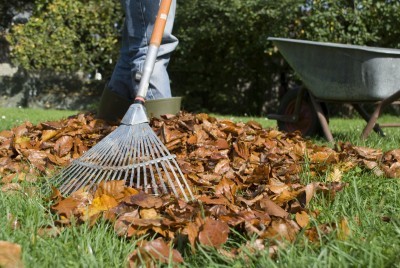






Lawn care doesn’t stop when the grass stops growing. Read on to find out how to take care of grass in fall.
When temperatures cool and the blades of grass stop growing, the roots of the turfgrass continue to grow. That’s why grass care in fall includes watering and fertilization to provide the nutrients and moisture the lawn needs to develop strong roots and build a reserve of energy.
You can use a hand-held spreader to fertilize a small lawn, but you’ll have better control and apply the fertilizer more evenly if you use a walk-behind spreader. Read the fertilizer package instructions and follow them carefully. Make sure you set your equipment to deliver the correct amount. This is one of those cases where more is definitely not better.
Fall is also the best time to apply a broadleaf lawn or moss herbicide should this be necessary.
Lawn care during fall includes lawn repair. Fix bald spots with seeds to match the type of grass or a lawn repair mixture. If you’ve planted a warm season grass, it will brown during the winter. If you don’t want to look at an amber lawn until spring, overseed it with perennial ryegrass.
Raking leaves is a fall lawn care task that few people look forward too, but it’s one of the most important things you’ll do for your lawn. Leaving the leaves on the grass blocks sunlight and encourages diseases. Remember, your grass isn’t dead, it’s just resting, and it need lots of sunlight. Blowing is easier than raking, but hard raking with a spring-tine lawn rake is good for the lawn because it loosens thatch and scratches the soil. Don’t wait until all of the leaves have fallen. Rain and morning dew stick the leaves together, forming a thick mat that is difficult to loosen and rake.
And while we’re talking about thatch and soil, dethatching and aerating are also critical parts of lawn care in autumn. In most cases, you’ll only need to do this every two years. You can aerate small lawns with a border fork or hollow tiner, pushing them deep into the soil. For a large lawn, you’ll need to rent a gas-powered, walk-behind aerator. They can be expensive, and you may come out ahead hiring a landscaping company to do the job.
Copyright © www.100flowers.win Botanic Garden All Rights Reserved